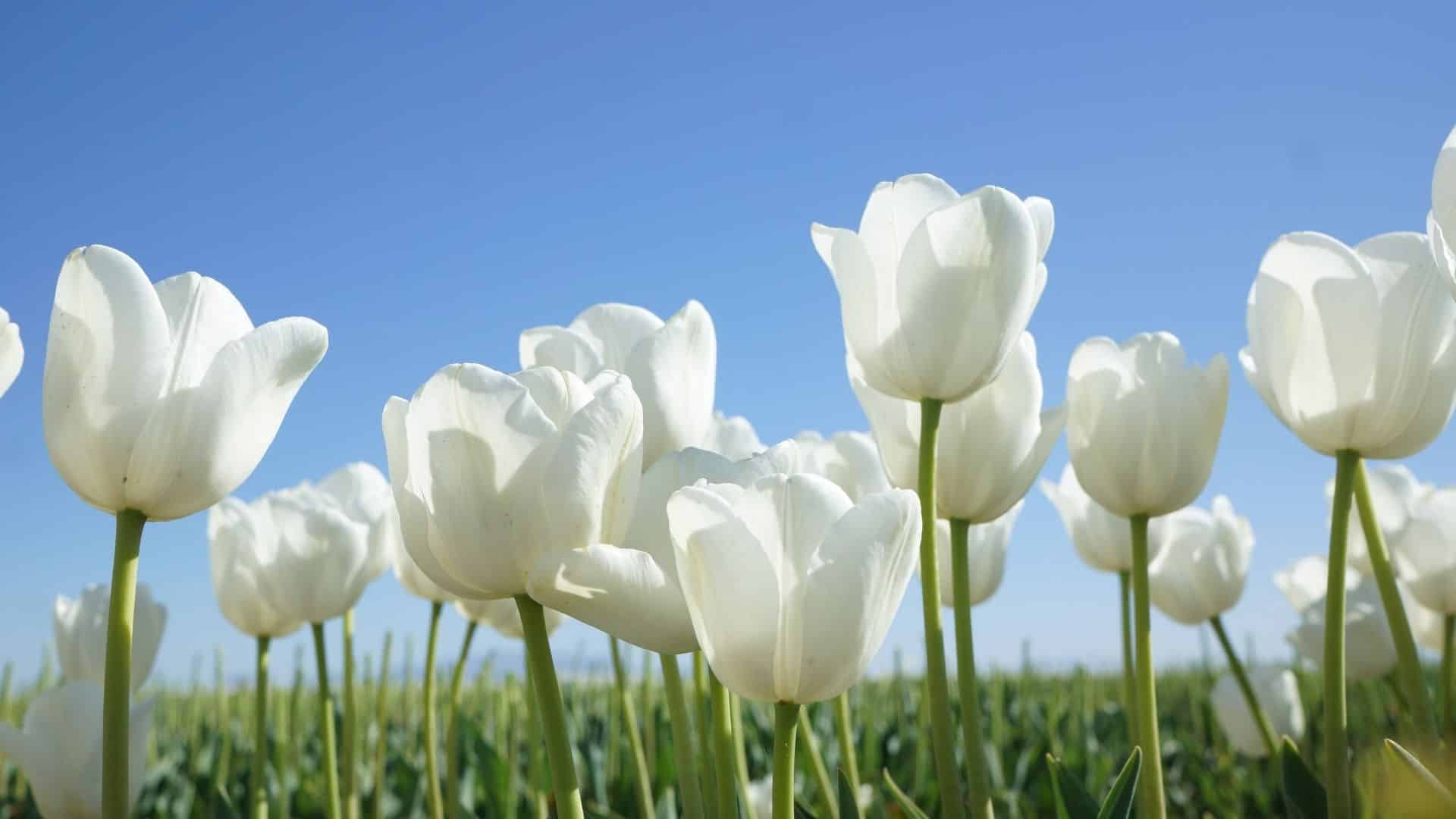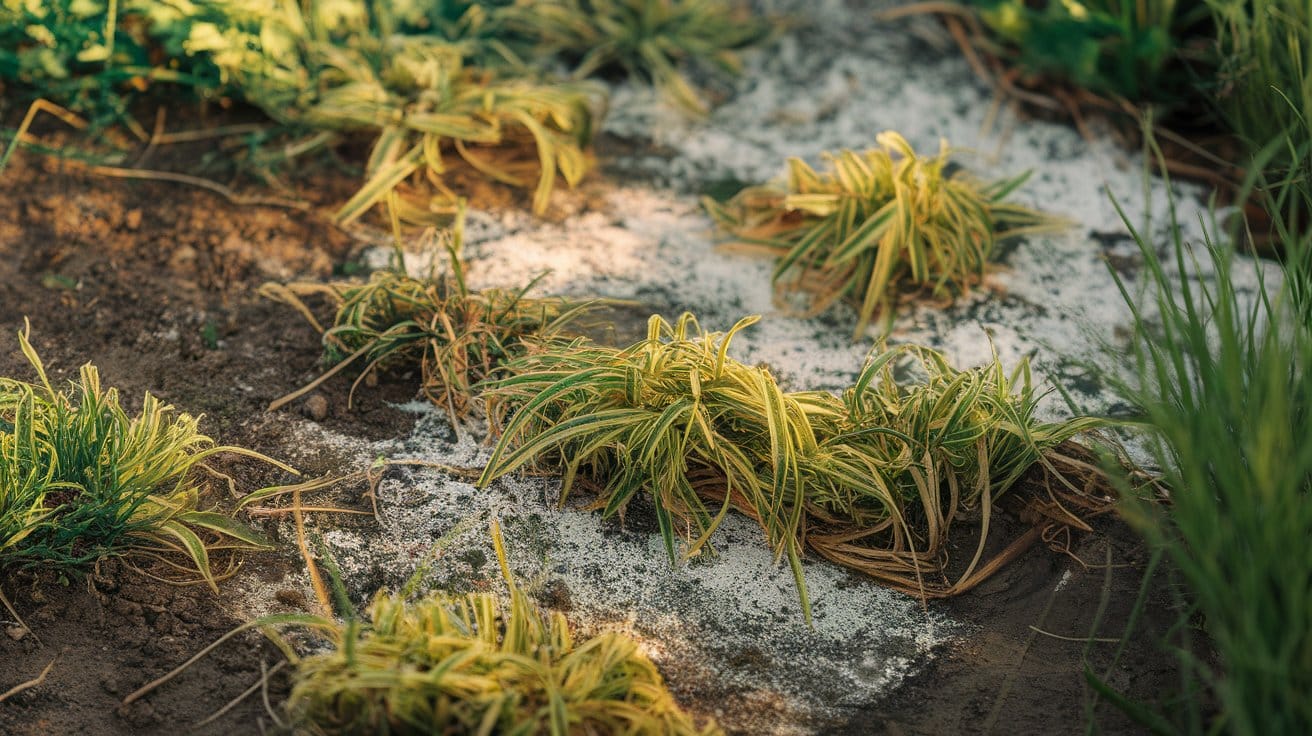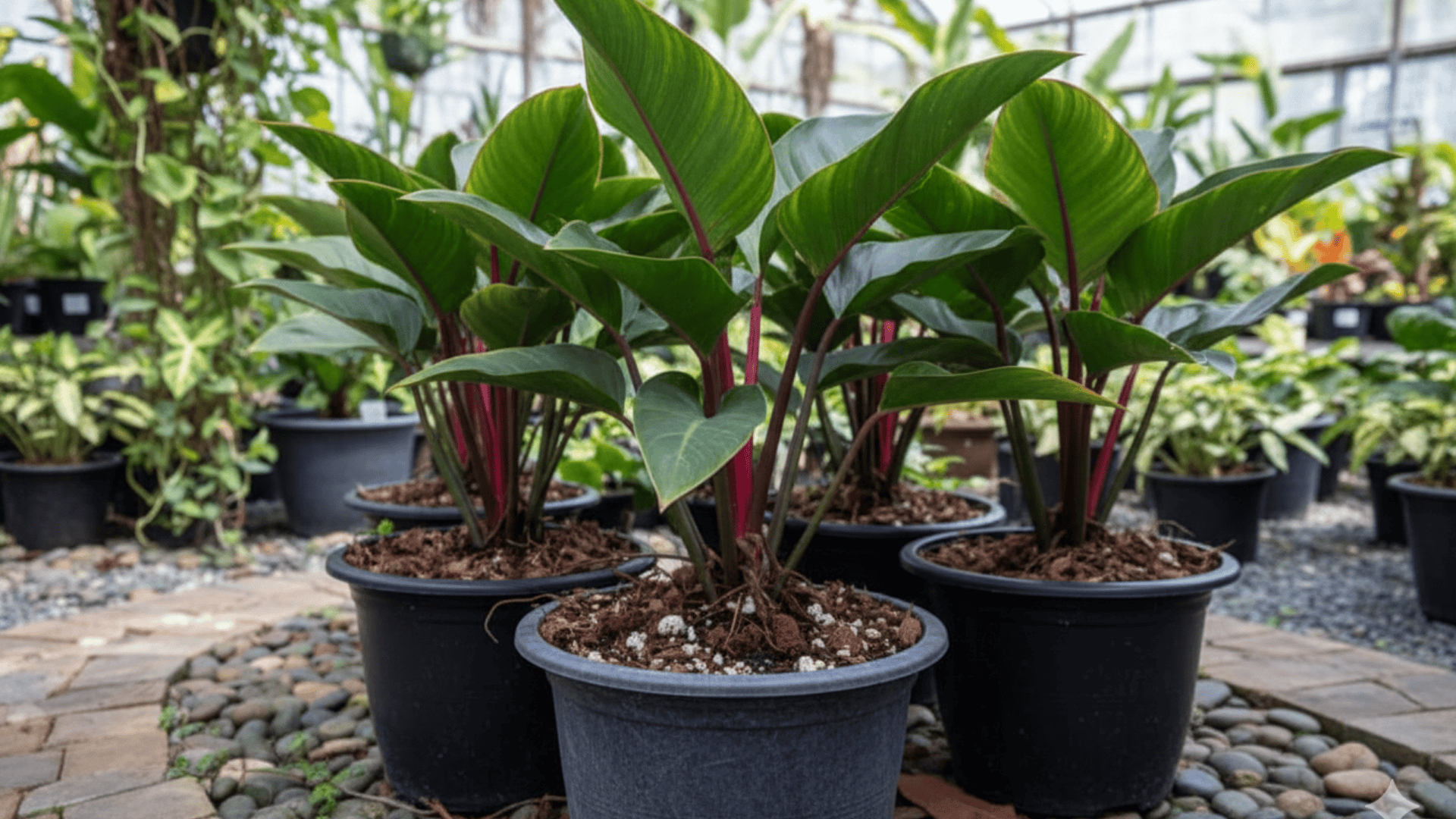There’s something deeply satisfying about watching a tired lawn come back to life, rich and green once more.
I’ve realised that using compost for the lawn is often what turns average grass into a truly healthy, lasting lawn.
Compost works quietly beneath the surface, feeding microbes, improving soil texture, and helping roots grow strong.
Compost does more than feed grass because it changes the way soil functions.
Many lawn owners use lawn topdressing with compost to refresh soil and support steady growth.
In this piece, I’ll share how choosing the right compost for the lawn supports balanced soil and why it’s worth adding to your lawn care routine.
By the end, you’ll know how this simple, natural step can make your lawn healthier for seasons to come.
What is Compost?
Compost is organic material formed through the natural decomposition of plant and food waste.
It enriches the soil with nutrients and enhances moisture balance by promoting microbial activity.
It helps in creating a healthier environment for roots and supporting sustainable lawn growth over time.
Why Should You Add Compost To Your Lawn?
Adding compost to the lawn is one of the easiest ways to restore soil health and improve grass vitality.
It replenishes organic matter lost over time, allowing the soil to hold water and nutrients more efficiently.
Compost also supports microbes that break down thatch and feed grass roots naturally, leading to steady, even growth.
Experts from Milorganite and The Spruce point out that composting strengthens soil structure and helps lawns recover from heat or heavy use.
By improving aeration and nutrient balance, compost reduces the need for frequent fertilizing.
Regular applications create a self-sustaining soil system that keeps your grass dense, green, and resilient through the seasons.
Benefits Of Using Compost On Lawns
Healthy lawns start below the surface, and compost plays a key role in that foundation.
Before applying it, it helps to understand how compost actually changes the soil and supports lasting lawn health.
-
Balances Moisture: Retains water in sandy soils while improving drainage in heavier soils to maintain consistent hydration.
-
Enhances Texture: Builds a loamy, crumbly structure that allows roots to expand and absorb nutrients efficiently.
-
Supports Consistent Color: Encourages even nutrient flow through the soil, resulting in uniform growth and greener blades.
-
Reduces Thatch: Promotes microbial activity that breaks down compacted organic layers and prevents buildup over time.
-
Encourages Resilience: Strengthens the soil ecosystem, making lawns less dependent on chemical fertilizers or treatments.
According to USDA research, compost raises soil organic matter levels, improving both fertility and structure.
Different Compost Types for Lawn Care

Different types of compost for lawn care offer unique benefits depending on texture, composition, and nutrient balance.
Choosing the right mix helps in maintaining steady grass growth through the seasons.
| Compost Type | Description |
|---|---|
| Manure | Should be dark, crumbly, and earthy, free of debris, indicating mature organic matter. |
| Heat-Processed Compost | Created at high temperatures above 140 °F, which helps kill weed seeds and pathogens. |
| Screened Compost | Fine particles under three-eighths of an inch spread evenly, avoid clumping, and reduce turf smothering risk. |
| Vermicompost (Worm Compost) | Produced by worms digesting organic waste, it offers balanced nutrients and supports long-term microbial activity. |
| Food Waste Compost | Formed from kitchen scraps, it increases nutrient content, encourages soil organisms. |
Best Bagged Compost for Top Dressing
Choosing the right bagged compost makes lawn care simpler by offering ready-to-use organic material that nourishes soil.
Supporting microbial life and promoting steady grass growth without extra mixing or preparation.
1. Blue Ribbon Organics Compost
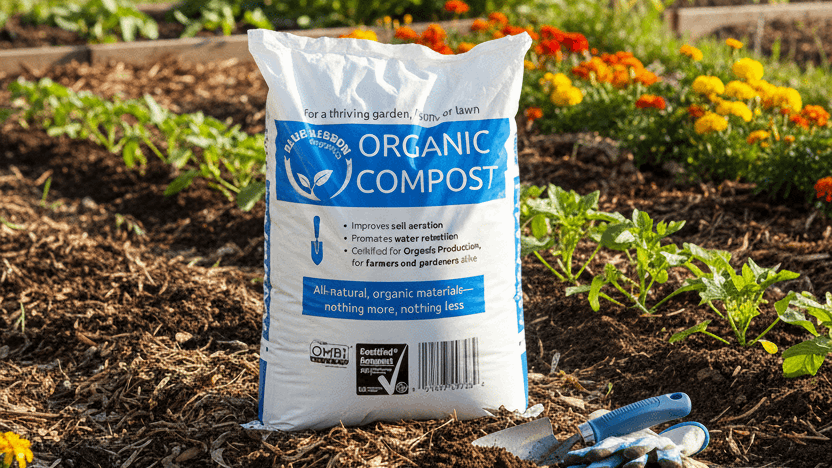
This screened, OMRI-certified compost blends fine recycled brush, grass clippings, and leaves to deliver a steady boost in moisture retention and soil texture.
Its uniform particle size makes it easy to spread evenly across turf, and users often mention how it helps previously thin areas fill in smoothly without heavy fertility inputs.
| Bag Size | Typical Price* |
|---|---|
| 35 lb bag | $55.99 |
2. SunGro Black Gold Natural & Organic Garden Compost

A value-driven organic blend that mixes aged bark, peat moss, and composted organics to improve drainage while also amending soil.
Best suited for lawns with compacted patches or clay-rich substrate, it promotes infiltration and supports healthier root development instead of just surface greening.
| Bag Size | Typical Price* |
|---|---|
| 1 cu ft bag | $9.80 |
3. Dr Earth Natural Choice Compost
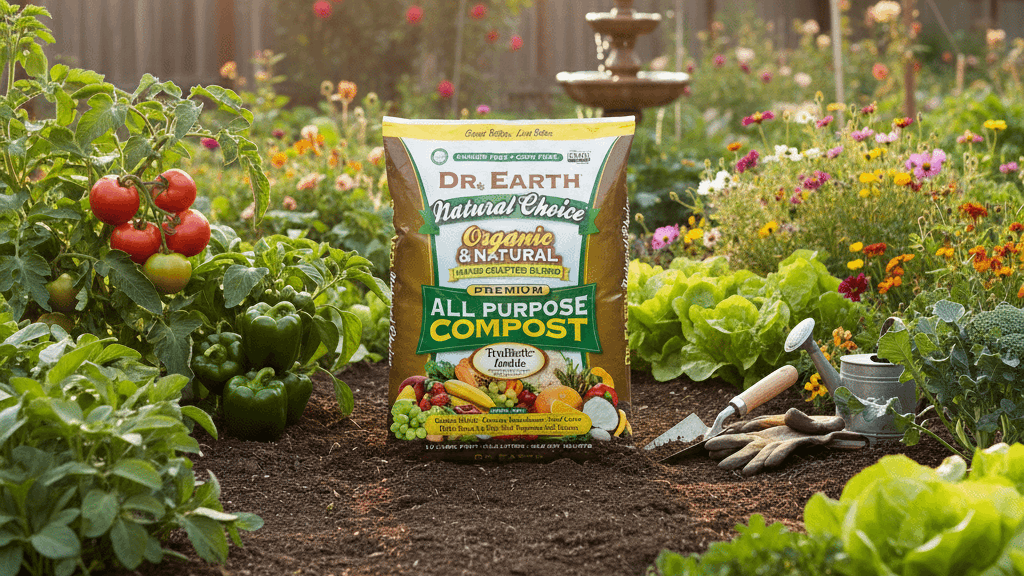
This blend brings in earthworm castings, alfalfa meal, and kelp meal, offering nutrient diversity and beneficial biology for lawns and adjacent beds.
While the texture is slightly coarser, that can be advantageous where mixing into turf or bed soil is needed, and it supports improved root and microbial activity.
| Bag Size | Typical Price* |
|---|---|
| 1.5 cu ft bag | $13.99 |
4. Michigan Peat Garden Magic Compost & Manure Blend

This odor-controlled mix of reed sedge peat and composted manure offers a smooth amendment without strong smells; ideal for use near patios or living areas.
It supports texture improvement and nutrient addition without overstimulating surface growth, making it well-suited for lawn top-dressing.
| Bag Size | Typical Price* |
|---|---|
| 40 lb bag | $25.74 |
5. Espoma Organic Land & Sea Gourmet Compost

This premium compost includes lobster and crab shell meal along with mycorrhizal fungi, supporting long-term root network development and soil biology.
While the cost is higher, it prioritises deep feed and longevity, ideal for lawns where root resilience is a focus.
| Bag Size | Typical Price* |
|---|---|
| 1 cu ft bag | $16.99 |
6. R&M Organics Premium Organic Compost
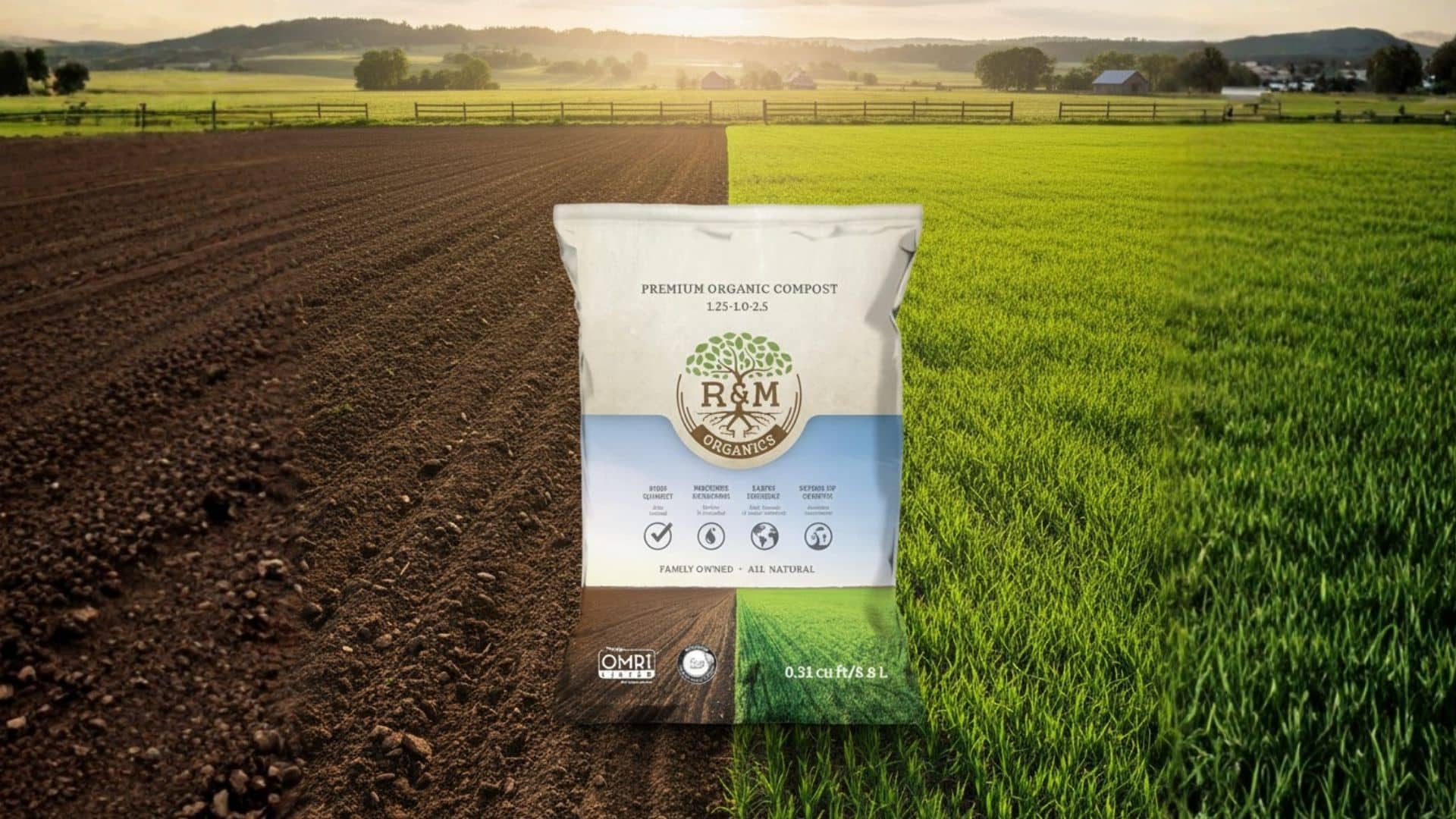
With its ultra-fine screen and emphasis on moisture retention, this compost is especially suitable for sandy-soiled lawns or dry-climate zones where retaining water is critical.
Its organic certification and low odor also make it suitable for use closer to living spaces or where minimal disturbance is preferred.
| Bag Size | Typical Price* |
|---|---|
| 10 lb bag | $21.97 |
7. Back to the Roots Organic Premium Compost

This peat-free, US-manufactured compost uses up-cycled plant and wood matter as its base.
Its slightly higher woody-residue texture offers a subtle benefit of increased aeration in turf that has lost pore space or is showing compaction.
Ideal for older lawns or those needing structural repair.
| Bag Size | Typical Price* |
|---|---|
| 1 cu ft bag | $19.99 |
How To Spread Composton Lawn?
Even and careful spreading of compost for lawn areas builds richer soil and balanced moisture.
These steps ensure that the thin-layer compost application properly distributes nutrients without smothering the grass.
Tools and materials you’ll need:
| Tools / Materials | Recommended Quantity / Details |
|---|---|
| Lawn Mower | 1 (set to a slightly lower height than usual) |
| Leaf Rake or Lawn Leveling Rake | 1 |
| Wheelbarrow or Garden Cart | 1 |
| Shovel or Scoop | 1-2 |
| Core or Spike Aerator | 1 (manual or powered) |
| Compost | About 1 cubic yard per 1,000 sq ft (1/4 – 1/2 inch layer) |
| Garden Gloves | 1 pair per person |
1. Prepare The Lawn
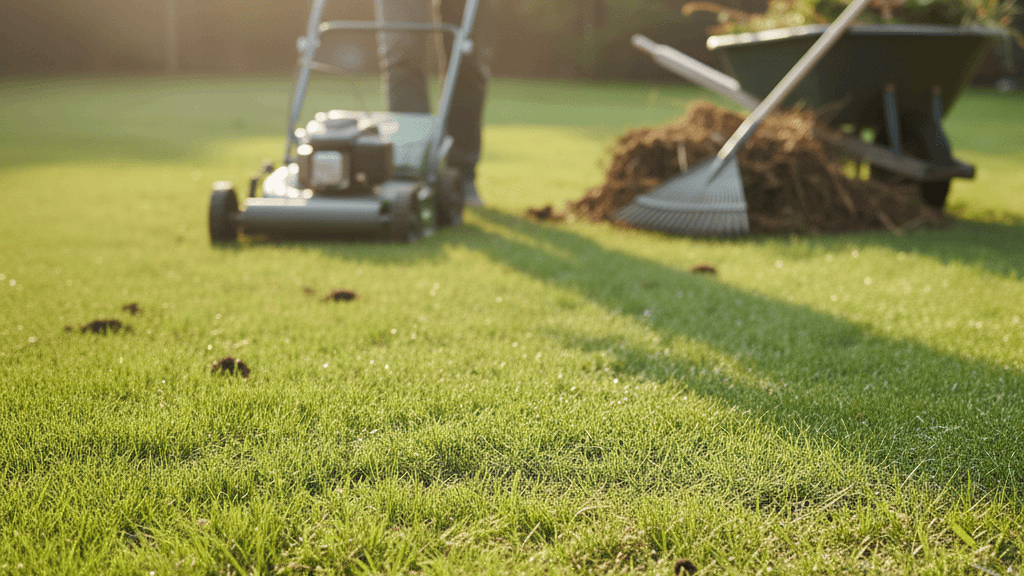
Mow the grass slightly shorter than usual to expose the soil surface and remove any leaves, sticks, or debris that could block contact.
If the ground feels compacted, use a core or spike aerator to loosen it and create pathways for water and air.
This step helps compost reach the soil evenly, letting roots and beneficial microbes interact freely for better nutrient absorption and stronger grass growth overall.
2. Measure And Distribute Compost
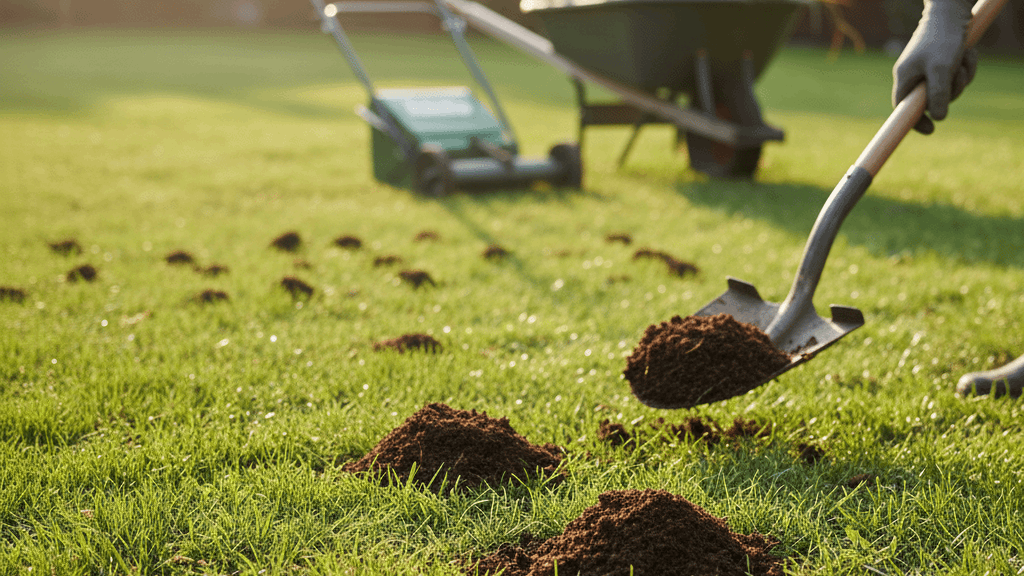
Use about one cubic foot of compost for every 25 square feet of lawn, ensuring consistent coverage.
Place small, even piles across the area rather than concentrating it in one spot.
Spread these piles gently using a shovel or gloved hand to maintain balance.
This careful distribution avoids clumping, prevents nutrient overload, and ensures every section of the lawn receives uniform improvement.
3. Rake Gently For Blending

Using the back of a rake or a leveling tool, spread compost into a thin layer about a quarter to half an inch thick.
Make sure the grass tips remain visible so they can continue photosynthesis.
Raking gently allows compost to mix naturally with the soil’s surface.
This blending step supports airflow, improves soil structure, enhances microbial activity, and helps nutrients move downward where they can reach and strengthen growing roots.
4. Water The Lawn Lightly

After spreading compost, water the area gently until the surface looks damp but not soaked.
Avoid heavy watering that could wash compost away before it settles.
This moisture helps activate beneficial microbes that break down organic matter.
As water carries nutrients into the soil, compost begins improving moisture balance and root depth, helping your lawn retain hydration.
Also, resist stress more effectively across different weather conditions throughout the growing season.
5. Maintain And Observe Results
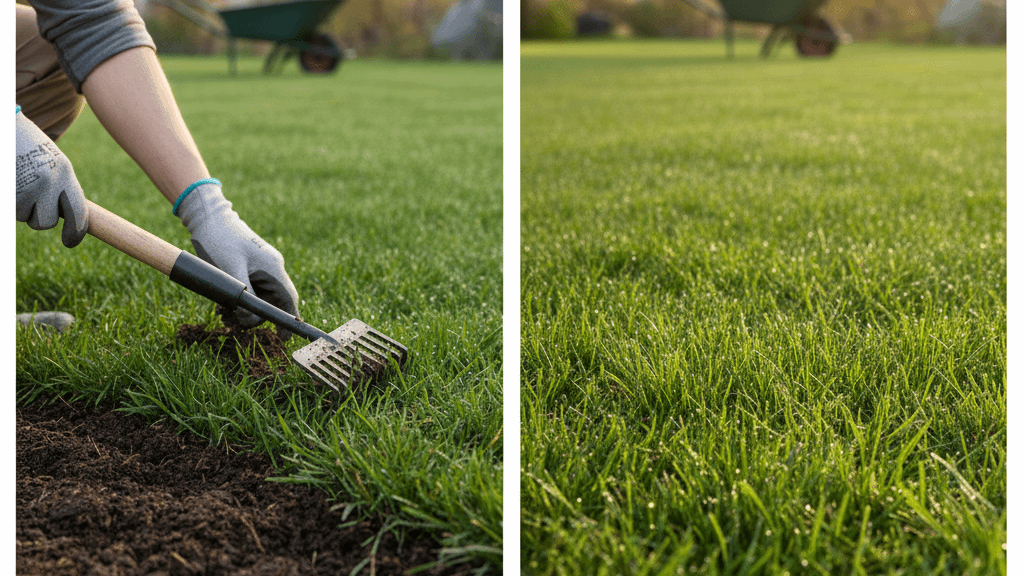
Keep the composted lawn consistently moist over the next few weeks without overwatering or cutting too soon.
Allow the compost to integrate gradually into the soil for the best results.
Monitor grass thickness, color, and texture to spot early improvements.
Over time, compost strengthens the soil, deepens roots, and reduces the need for synthetic fertilizers, creating naturally balanced, resilient grass that stays greener.
When And How Often To Apply Compost?
Most lawns do well with one annual application, while sandy or compacted soil may benefit from two.
Over time, doing compost layering on turf seasonally maintains balance and builds long-term soil strength.
| Season | Best Time | Why This Period | Where It Suits Best |
|---|---|---|---|
| Early Spring | After the last frost, when the soil softens | Encourages root regeneration and supports early growth | Mild or warm climates |
| Late Spring | As the grass enters vigorous growth | Replenishes nutrients lost from winter stress | Lawns lacking vigor |
| Early Fall | After the summer heat eases | Builds root strength before cold periods | Many temperate zones |
| Late Fall | Before frost hardens the soil | Stores nutrients and supports spring growth | Cooler regions |
Regular composting helps soil stay balanced and can cut down on fertilizer use over time.
Using Compost For Lawn: Common Mistakes To Avoid
Even with good intentions, small errors can undo compost benefits.
Knowing what to avoid helps protect both soil and grass.
-
Overapplication: Layering too thickly blocks light and air, choking the turf.
-
Unfinished Compost: Still decomposing material may overheat the soil or introduce weeds.
-
Poor Distribution: Uneven spreading causes patchy growth and wastes nutrients.
Patience matters because real results develop gradually and last longer when compost is applied evenly and periodically.
Final Thoughts
Composting represents patience in action, where small, steady efforts lead to a thriving, self-sustaining lawn.
It reminds us that lasting growth begins below the surface, and progress builds quietly with time.
By focusing on the process instead of instant results, you create soil that naturally supports strength, color, and balance year after year.
Every bit of compost contributes to a system that works in harmony with nature rather than against it.
I believe that this approach changes lawn care from a task into a mindful habit with visible rewards.
Staying consistent with compost for lawn improvement builds long-term soil health and balanced, natural beauty through every season.
Write down in the comments how you plan to bring composting into your regular lawn routine.
Frequently Asked Questions
Is Compost Alkaline or Acidic?
Compost is usually slightly acidic to neutral, with a pH between 6 and 8, depending on the materials used and how fully the composting process has been completed.
Is Compost the Same as Fertilizer?
No, compost is not the same as fertilizer; compost enriches soil structure and microbial life, while fertilizer directly supplies concentrated nutrients for faster, short-term plant growth.
Does Compost Turn to Soil?
No, compost does not turn into soil; it mixes with existing soil to enhance structure, moisture balance, and nutrient content while supporting long-term fertility and healthy plant growth.



